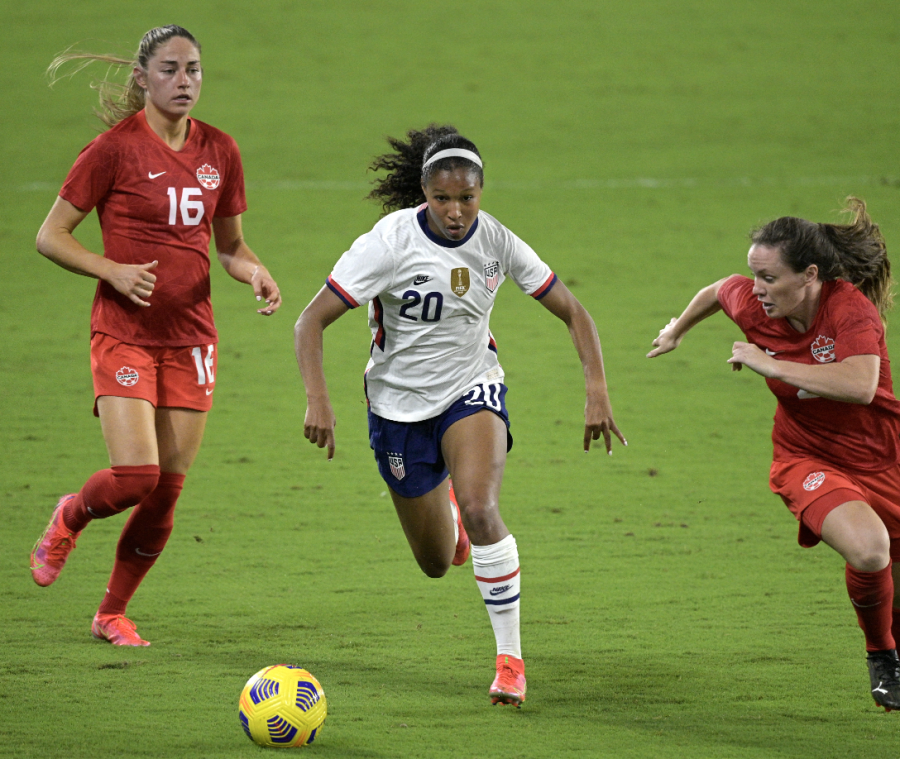Ally and Izzy’s Final Statistics Project
Investigative Study
Background
Our guiding question was: is there a relationship between different factors and injury prevalence in soccer? From our own experience watching soccer, we have noticed that certain injuries seem more prevalent in women’s soccer than men’s, however we were unsure if that is backed in data or just based in bias. If there were to be a discrepancy in some way, this could be important because finding discrepancies could allow for more careful targeted injury prevention measures that would better protect the players.
The data and previous research we found compares data within a gender group (i.e. men’s or women’s). What we did was to compare the two gender groups together in order to see if there was a significant association between gender and injury prevalence.
Research Question
Our specific research question was: is there a discrepancy between injury prevalence in men’s and women’s soccer based on gender or type of injury? We looked into injury prevalence in soccer under the lens of gender and type of injury. In the future, more indepth research could be conducted in order to look further into certain tournament or game types or type of field playing on (grass or turf) as well as players’ positions. This would allow for more clarity on other factors that could impact the injury prevalence, as well as to highlight potential issues with certain tournaments, positions, or field types.
Methods
We did an observational study using an approach of mining data to analyze further based on our research question. The first step of our project was to find data on injuries in men’s and women’s collegiate soccer. We looked at the types of injuries for men’s and women’s soccer in order to notice if there were significant differences in types of injuries. We also looked at the gender of the players and whether they play men’s or women’s soccer, in order to figure out if there were discrepancies in injury prevalence or type. Next, we organized and sorted data by creating a chart that demonstrates the relationships we looked at. Finally, we analyzed and drew conclusions based on the data by using a chi-square test.
Results and Analysis
Our null hypothesis is that there is an equal prevalence in injuries in men’s and women’s soccer. Our alternative hypothesis is that there is an unequal prevalence in injuries in men’s and women’s soccer. Using the chi-squared hypothesis test, we tested this hypothesis. Figure 1 contains the observed data points of reported injuries and Figure 2 demonstrates the chi-squared values for the respective injuries.
Figure 1: Observed Breakdown of Reported Injuries in Men’s and Women’s Soccer
| Injury Site | Injuries Reported Men | injuries reported Women |
| Head/face | 290 | 477 |
| Neck | 17 | 56 |
| Shoulder | 99 | 87 |
| Arm/elbow | 35 | 56 |
| hand/wrist | 112 | 136 |
| trunk | 174 | 576 |
| hip/groin | 340 | 343 |
| thigh | 469 | 576 |
| knee | 368 | 655 |
| lower leg | 249 | 368 |
| Ankle | 424 | 581 |
| foot | 243 | 277 |
| other | 31 | 76 |
| total | 2851 | 4264 |
Figure 2: Chi-Squared Values of Injuries Reported
| Injury Site | Chi-Squared Value |
| Head/face | 1.631 |
| Neck | 48.49 |
| Shoulder | 13.43 |
| Arm/elbow | 0.103 |
| hand/wrist | 2.67 |
| trunk | 169.92 |
| hip/groin | 26.81 |
| thigh | 10.064 |
| knee | 7.16 |
| lower leg | 0.0207 |
| Ankle | 1.88 |
| foot | 9.6 |
| other | 5.51 |
| total | 12.684 |
Utilizing the chi-squared test, we analyzed the data at a 5% significance level and one degree of freedom. This means that every chi-squared value over 3.841 requires a rejection of the null hypothesis, and any chi-squared value below 3.841 is a failure to reject the null hypothesis. With this in mind and based on our data, we reject the null hypothesis for neck, shoulder, trunk, hip/groin, thigh, knee, foot, and other injury types. We also reject the null hypothesis for injury prevalence in general, meaning that we found that injuries do have an unequal prevalence. Based on the data, we fail to reject the null hypothesis for head/face, arm/elbow, hand/wrist, and ankle injuries, meaning that there is not enough data to disprove the null hypothesis of equal injury prevalence between men and women.
Conclusions
The analysis within this paper was aimed to find if there was a difference in injury prevalence between men’s and women’s soccer. However, by utilizing the chi-squared test, we were only able to figure out that there was a difference, rather than in which way the difference skewed. We reject the null hypothesis for injury prevalence between men’s and women’s soccer, but we are unable to say which gender has more injuries, just that one does have an unequal prevalence. In future analysis and research, it would make sense to figure out which gender does have the unequal prevalence. This could be done by utilizing further methods of data analysis and testing. Additionally, future studies could look at position, type of tournament or league, or field type in order to further understand injuries within soccer and allow for more targeted injury prevention.







